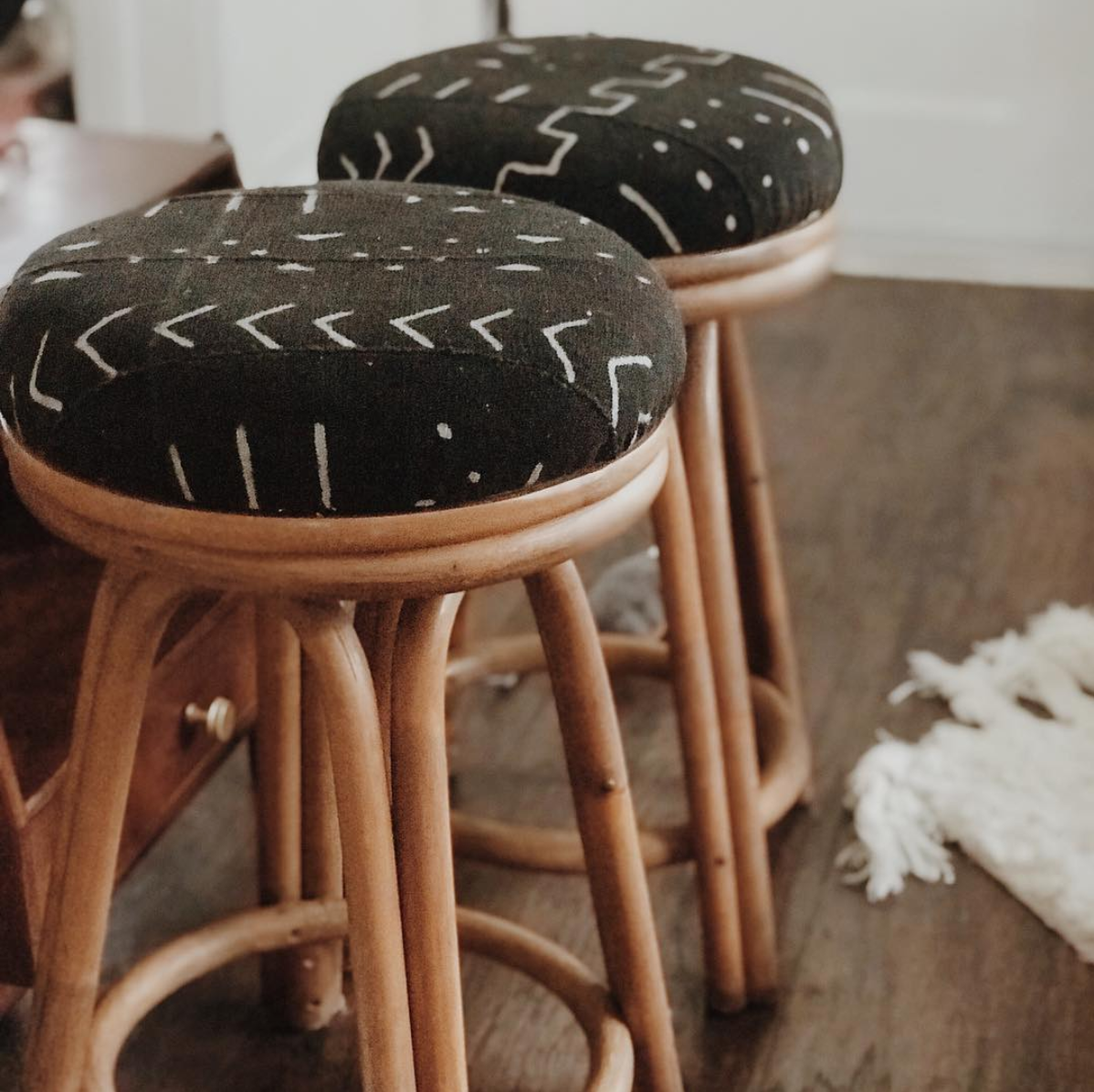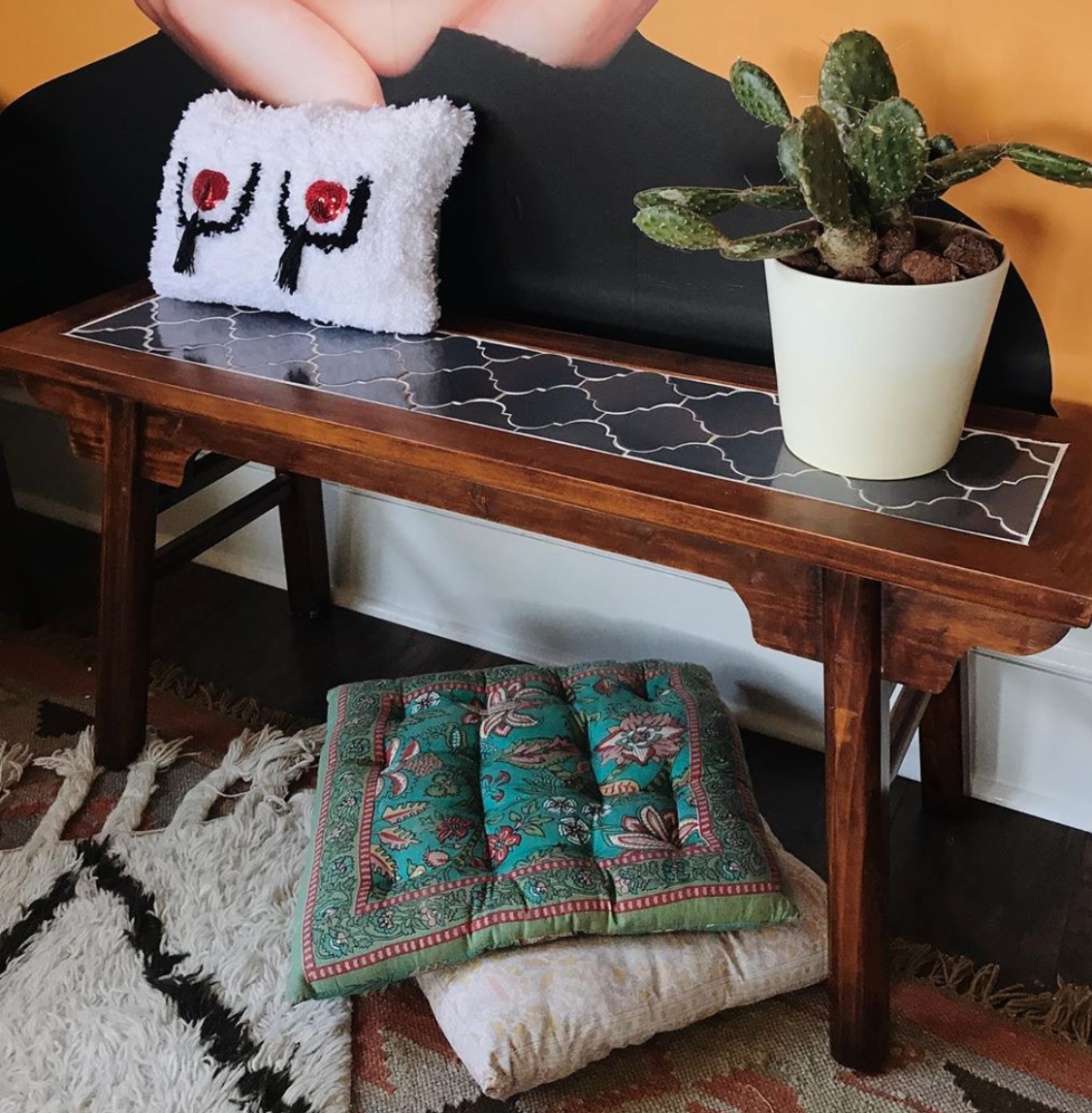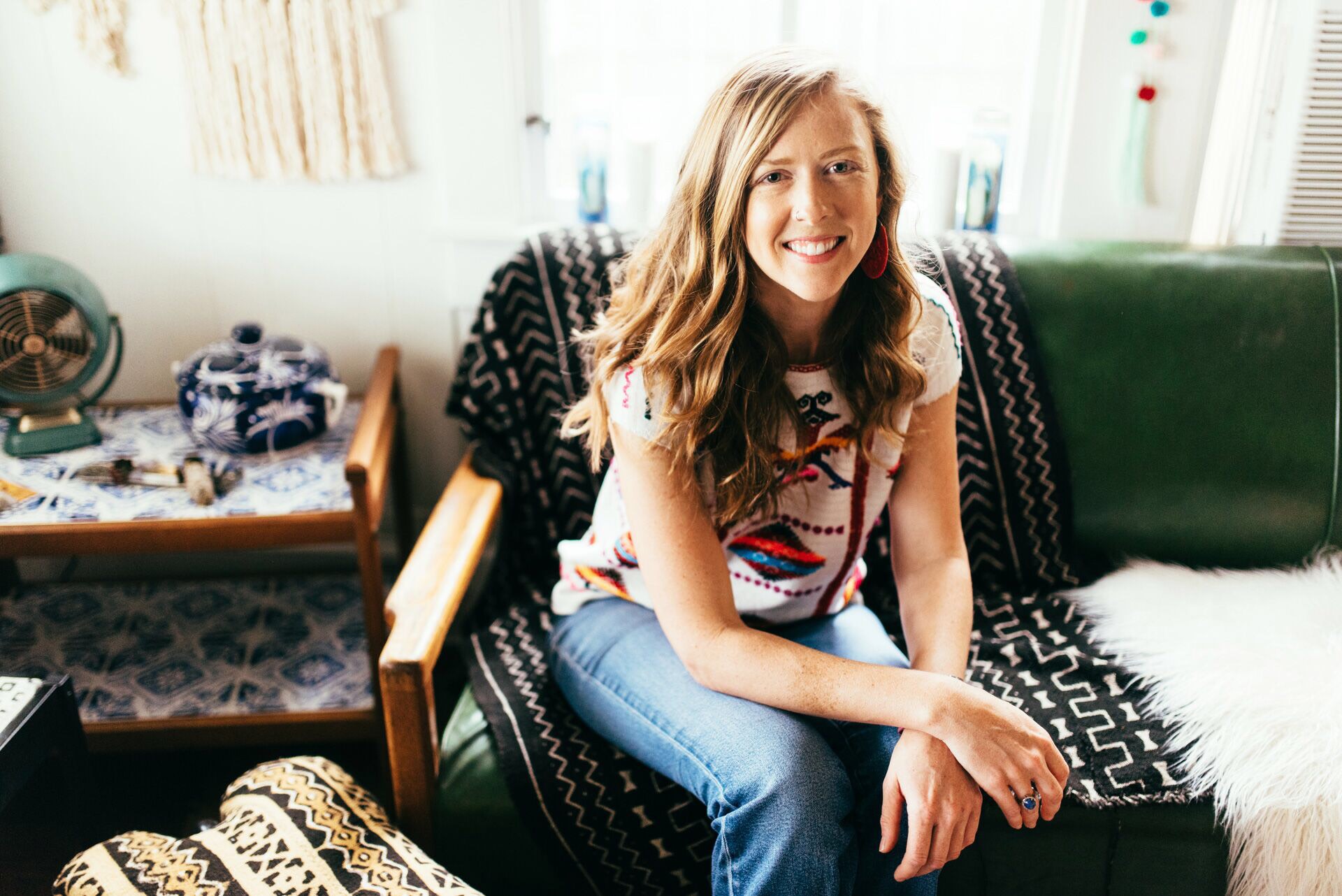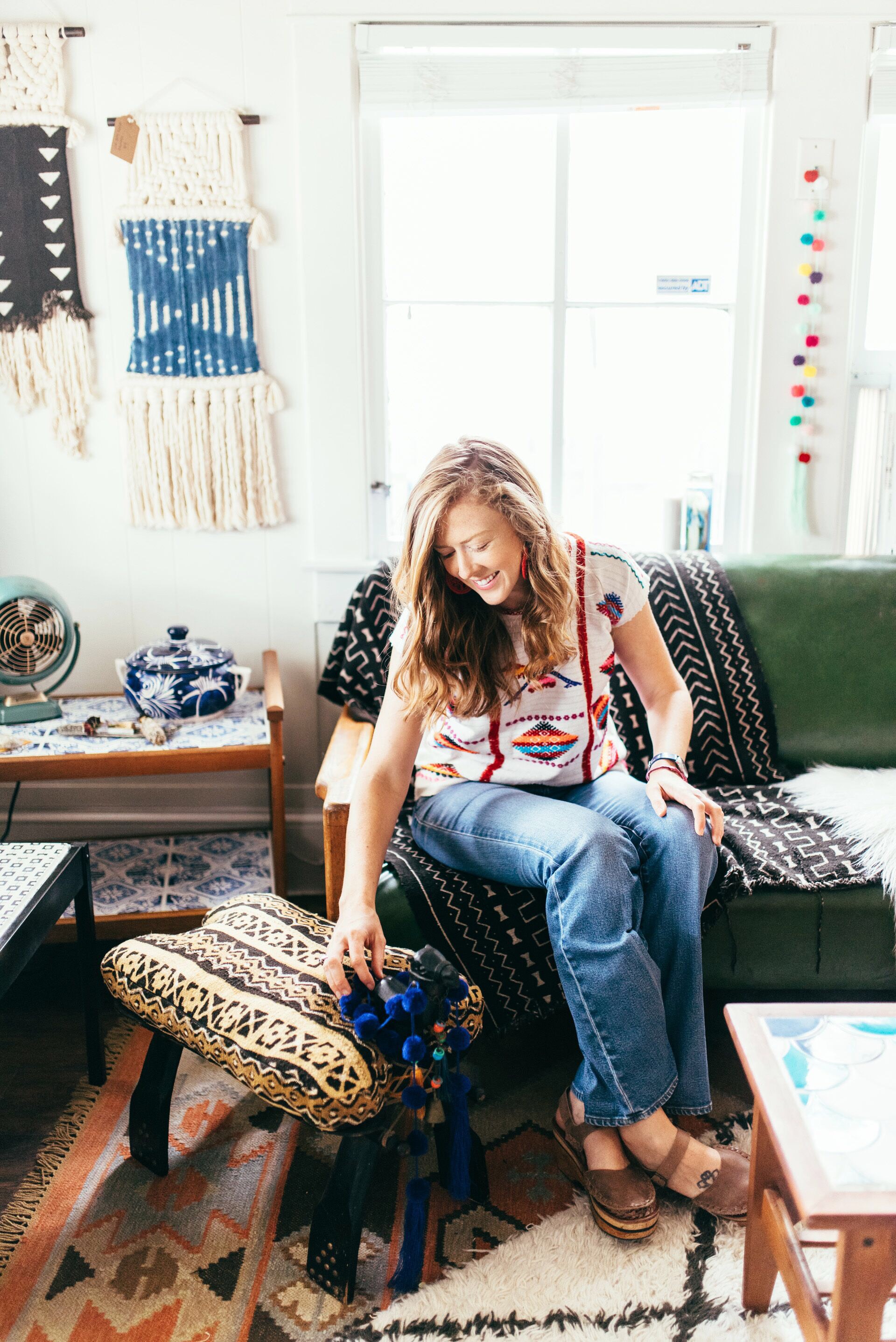Creative’s Handbook is our newest series that dives even further into the details behind running a creative business. We’ll be asking fellow creatives to share their expertise on marketing, money, production, self-care, and everything in between.
In today’s Q&A, Allie Launius, owner and maker behind Stampworthy Goods shares her tips for maximizing profitability and breaks down the systems that have improved her efficiency.
______________
Tell us about your background. What were you doing before Stampworthy Goods, and what led you to start the business?
Before I started Stampworthy Goods, I was working for travel startups. I basically got a crash course on every aspect of starting a business – what works, what doesn’t work. My experiences succeeding and failing at everything from sales, marketing, to customer experience all inform how I operate today.
As a maker, what was the first step you took to turn your product into a business?
Last year, I decided I wanted to start my own business. I took a day to thought vomit a document called “WTF Do You Want To Do” that listed my dreams, fears, skills, and deficiencies. This provided me a clear direction before anything else.
In terms of the product itself, the resource-constrained startup world teaches you to constantly test the market and prove demand before investing your time and money.
I started getting positive response from my family and friends on my furniture pieces, but I knew this wasn’t proving demand. I posted the furniture pieces online for sale (Facebook Marketplace, Craigslist, NextDoor) to see if total strangers would buy it and at what price point (even though I wasn’t actually selling it).
After that desire in the market was confirmed, I knew I was onto something. It’s so funny–I’m scrolling this “WTF Do You Want To Do” document and my number one dream job was managing an ecommerce site and running trips to Mexico. And one year later, I’ve accomplished both!

What are three things you think makers and artists should consider when pricing their products?
Salary goals: You have to create clear goals to hit and work backwards from there. I started with “What is my goal for a yearly salary?” From there, I mathed out monthly targets and figured out how many furniture pieces I needed to sell to hit that target each month. It’s important to include vacation, PTO, insurance – all the perks and amenities a full-time job would get you – when you think through your salary.
Price on value, not on budget: Early on I realized my pricing strategy wasn’t aligned with my salary goal. It’s a common mistake all makers make – undervaluing your own work. A big lesson for me was to price my products based on value, not on my own budget (which is nonexistent when starting a new business).
Know your numbers: I have a master spreadsheet where I track just about everything: every fixed cost, how much time it takes to make a piece of furniture, the margin on every sale, number of days it takes to sell a product. Having this organized really helps me focus. If I see upholstery projects take less time and sell for a higher margin, maybe I’ll focus on those to hit my monthly revenue target. Maybe coffee tables with blue hex tile sell immediately – I’ll increase my pricing according to demand. Maybe I love a certain type of project, but it takes too much time and isn’t as profitable – I know to drop it. In creative work, we can get lost in the art of what we’re doing, which is great as a hobby, but in order to do it for a living, we need to have a clear understanding of the business side.
“It’s a common mistake all makers make – undervaluing your own work. A big lesson for me was to price my products based on value, not on my own budget.”
Do you have any systems in place that have helped improve your workflow?
My Master Spreadsheet! At the beginning of every month (and during the month), I look at my master spreadsheet to see what projects and products succeeded and failed. Success is relative, but for me, I generally look at the profitability of each individual piece. I also set quarterly revenue and profit goals and check in with those.

When it comes to building a profitable business model, what do you think is the biggest challenge and how have you taken on that challenge?
The first year (for me) was a lot of testing ideas – which is humbling but valuable all the same.
As an example, I tested various sales channels. It turns out for me, with furniture, it’s more profitable to sell through Instagram than the Austin weekend markets scene. I also spent a lot of time testing customer demand – just because I love something, doesn’t mean the market/consumer will too. Pay attention to your customer’s responses and follow what works!
Are there any tools or resources you can recommend that have helped you refine your business and its profitability?
Tools that are key for a maker are:
Square: Lots of cool sales reporting
Expensify: I track all of my monthly expenses here. I use the paid version ($4.99 monthly) so you just take a photo of your receipts and store them for tax season.
Google Sheets/Excel: If excel isn’t your jam, I would suggest something like Quickbooks/Freshbooks and utilize their reporting functionality. Or learn Excel (so many YouTube tutorials!).
And tap into your community! I have learned so much by reaching out to a kick ass business lady and asking if we can grab a coffee. I found both of my current studio mates that way, so slide into those DMs!
What has been the biggest lesson you’ve learned from the past year in business?
Follow what works and really lean into it. My first attempt at my business was selling restored vintage furniture, but I quickly learned that it was a very saturated market in Austin so I had to find a way to stand out. After making my first tiled piece of furniture, the feedback was overwhelmingly positive.
______________
 Allie grew up in a home with a mother that knew how to make a masterpiece from scraps – turning leftover fabric into clothes, picking fruit to make homemade jam, building forts from reclaimed wood. This became a pillar for how Allie approaches just about everything.
Allie grew up in a home with a mother that knew how to make a masterpiece from scraps – turning leftover fabric into clothes, picking fruit to make homemade jam, building forts from reclaimed wood. This became a pillar for how Allie approaches just about everything.
Allie moved to Austin in 2017, and after eight years working in travel startups, she left to pursue her own business, Stampworthy Goods, rehabbing furniture and leading curated travel experiences focused on textile and food markets. In Stampworthy’s furniture, you’ll see the inspiration Allie pulls from the textiles and tiles that she’s seen all over the world. When she isn’t in her favorite textile city of Oaxaca, she loves treasure hunting around Austin (and anywhere honestly).
Her most recent venture is The Lemon House with the very talented Meesha Farzaneh of Saffron Soul Textiles and Rebecca Borelli. The Lemon House serves as a studio space as well as a showroom with our creations for sale, workshops and other community events. Come say hello!
Where to find Allie–
Website: www.stampworthy.com
Instagram: @stampworthygoods
Email: stampworthyinfo@gmail.com
Images of Allie by Anna Reynal, Stampworthy Goods photos via @stampworthygoods on Instagram.
